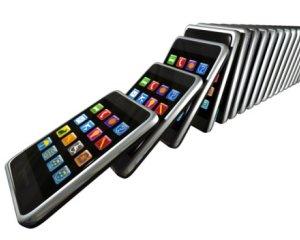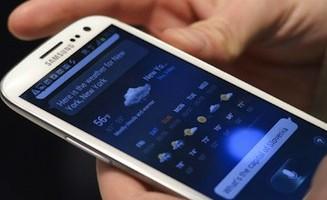 It's another reason why opportunities are still growing for mobile developers who can turn their insights and novel ideas into products and services for education markets. Attendance at FETC increased by about 15 percent over 2012, to 9,500 people. At the sessions I attended, virtually everyone had a tablet of some kind, taking notes, looking at material referenced by the speaker, or inputting comments on Twitter for everyone in the room to see. I also noticed state-of-the-art WiFi routers and antennae at the back of each meeting room. 3G and 4G cell reception was great. I had no trouble browsing pages, texting, or making calls from the show floor or the individual sessions. However, there weren't as many "pure" mobile app plays as there were last year. Instead, a number of vendors were offering device-management setups where a bunch of mobile devices could be directed from either a standard Web browser or a PC application.
It's another reason why opportunities are still growing for mobile developers who can turn their insights and novel ideas into products and services for education markets. Attendance at FETC increased by about 15 percent over 2012, to 9,500 people. At the sessions I attended, virtually everyone had a tablet of some kind, taking notes, looking at material referenced by the speaker, or inputting comments on Twitter for everyone in the room to see. I also noticed state-of-the-art WiFi routers and antennae at the back of each meeting room. 3G and 4G cell reception was great. I had no trouble browsing pages, texting, or making calls from the show floor or the individual sessions. However, there weren't as many "pure" mobile app plays as there were last year. Instead, a number of vendors were offering device-management setups where a bunch of mobile devices could be directed from either a standard Web browser or a PC application.
Mobile Opportunities Continue to Grow in Education
Last year, the big news at the Florida Educational Technology Conference was mobile everything. This year, mobile was no longer the new, new thing — it's been accepted and integrated. It's just there. It just works.  It's another reason why opportunities are still growing for mobile developers who can turn their insights and novel ideas into products and services for education markets. Attendance at FETC increased by about 15 percent over 2012, to 9,500 people. At the sessions I attended, virtually everyone had a tablet of some kind, taking notes, looking at material referenced by the speaker, or inputting comments on Twitter for everyone in the room to see. I also noticed state-of-the-art WiFi routers and antennae at the back of each meeting room. 3G and 4G cell reception was great. I had no trouble browsing pages, texting, or making calls from the show floor or the individual sessions. However, there weren't as many "pure" mobile app plays as there were last year. Instead, a number of vendors were offering device-management setups where a bunch of mobile devices could be directed from either a standard Web browser or a PC application.
It's another reason why opportunities are still growing for mobile developers who can turn their insights and novel ideas into products and services for education markets. Attendance at FETC increased by about 15 percent over 2012, to 9,500 people. At the sessions I attended, virtually everyone had a tablet of some kind, taking notes, looking at material referenced by the speaker, or inputting comments on Twitter for everyone in the room to see. I also noticed state-of-the-art WiFi routers and antennae at the back of each meeting room. 3G and 4G cell reception was great. I had no trouble browsing pages, texting, or making calls from the show floor or the individual sessions. However, there weren't as many "pure" mobile app plays as there were last year. Instead, a number of vendors were offering device-management setups where a bunch of mobile devices could be directed from either a standard Web browser or a PC application.
 It's another reason why opportunities are still growing for mobile developers who can turn their insights and novel ideas into products and services for education markets. Attendance at FETC increased by about 15 percent over 2012, to 9,500 people. At the sessions I attended, virtually everyone had a tablet of some kind, taking notes, looking at material referenced by the speaker, or inputting comments on Twitter for everyone in the room to see. I also noticed state-of-the-art WiFi routers and antennae at the back of each meeting room. 3G and 4G cell reception was great. I had no trouble browsing pages, texting, or making calls from the show floor or the individual sessions. However, there weren't as many "pure" mobile app plays as there were last year. Instead, a number of vendors were offering device-management setups where a bunch of mobile devices could be directed from either a standard Web browser or a PC application.
It's another reason why opportunities are still growing for mobile developers who can turn their insights and novel ideas into products and services for education markets. Attendance at FETC increased by about 15 percent over 2012, to 9,500 people. At the sessions I attended, virtually everyone had a tablet of some kind, taking notes, looking at material referenced by the speaker, or inputting comments on Twitter for everyone in the room to see. I also noticed state-of-the-art WiFi routers and antennae at the back of each meeting room. 3G and 4G cell reception was great. I had no trouble browsing pages, texting, or making calls from the show floor or the individual sessions. However, there weren't as many "pure" mobile app plays as there were last year. Instead, a number of vendors were offering device-management setups where a bunch of mobile devices could be directed from either a standard Web browser or a PC application.



